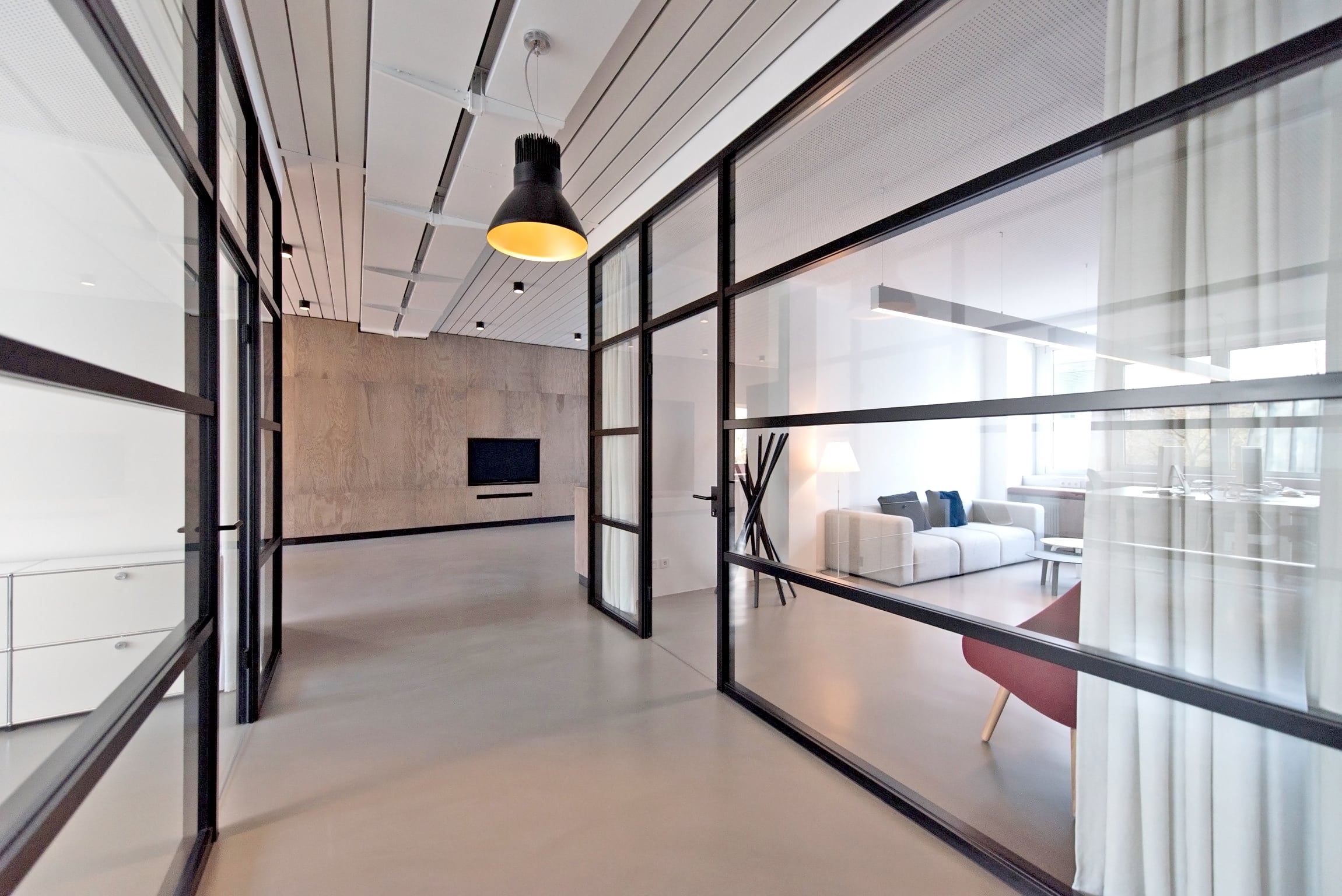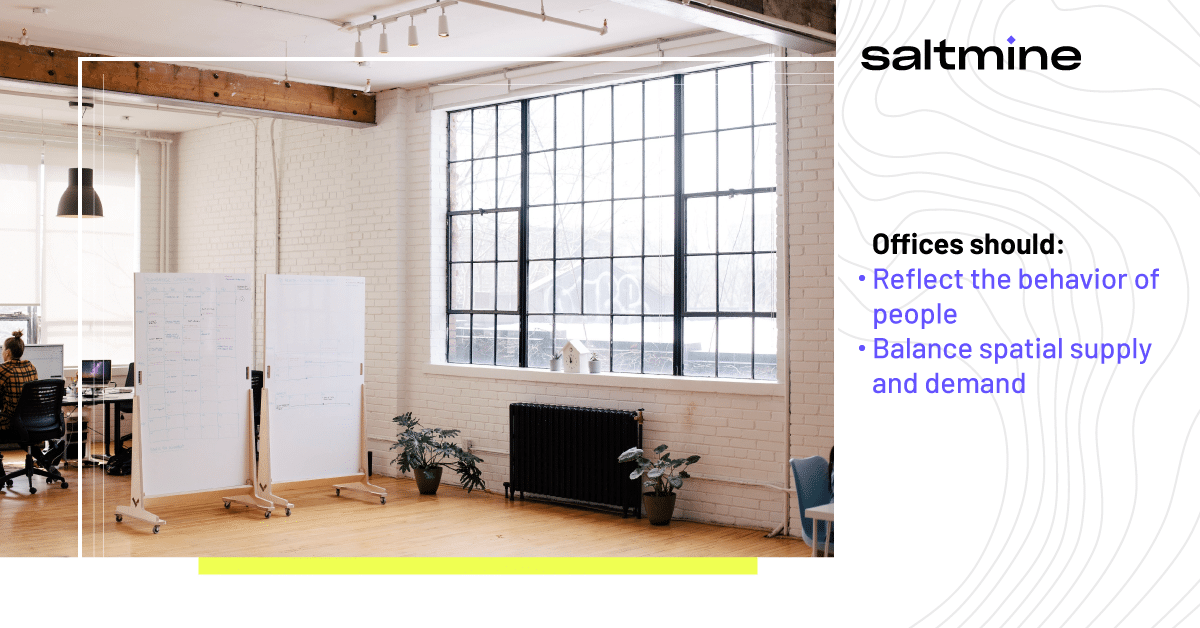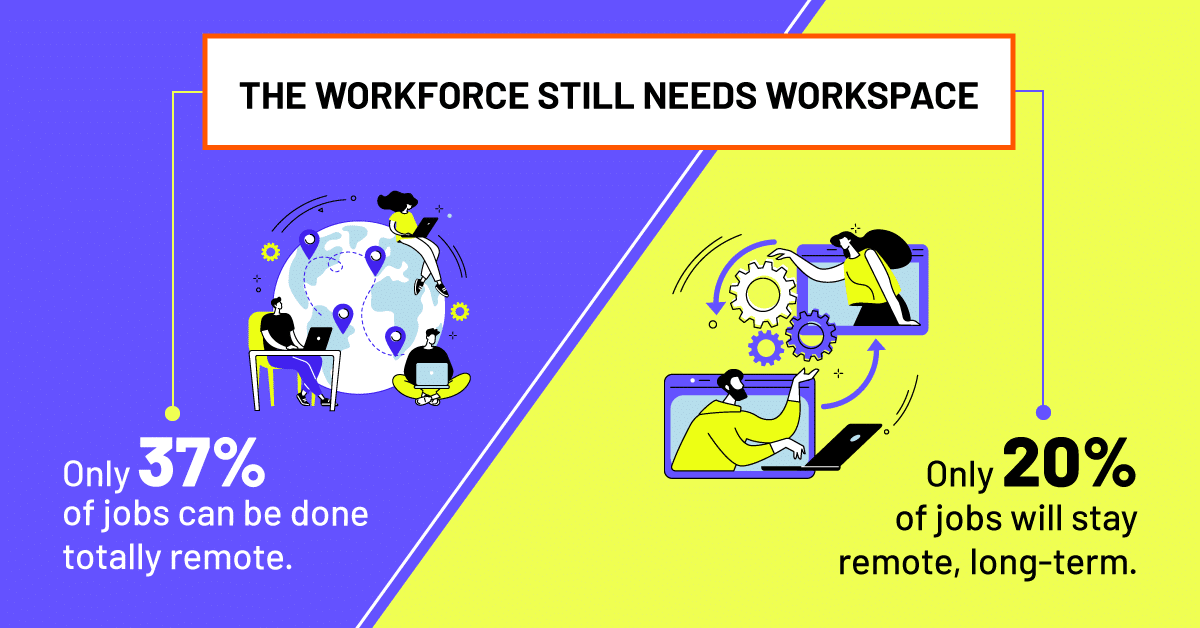Corporate real estate is actively changing and increasingly complex; however, like anything, there are some clear do’s and don’ts.
The uncertainties and unknowns challenging corporate real estate practices and procedures are evolving, nuanced, and in many cases, unpredictable. The “return-to-office” is murky and complex. New Covid variants, changing workforce trends, and deciding whether to re-design, downsize, or even decommission office space, isn’t an intuitive decision.
Decisions regarding a company’s future-of-workplace have to consider people, space, and technology and how they all interact is unique to the organization. However, despite this ambiguity, there are several Do’s and Don’ts we can all recognize as valid as we work towards modern CRE practices and procedures.

Do #1: Give employees a voice
Now more than ever do companies need to have a firm grasp of what their employees need—and want—out of an office. The employee experience matters.
At the end of the day, employees demand flexibility and autonomy, and as we continually see amidst the “Great Resignation,” it’s safe to say that employees will continue to leave companies if modern practices and procedures aren’t implemented.
To measure the employee experience, many workplace teams use employee net promoter scores (eNPS) questionnaires to capture feedback from a quantitative perspective and other survey tools to capture insights from employees. However, what tends to be missing from these questionnaires and survey tools is the employee perception of not only the workplace but the best way to enhance the workplace, for employees.
To bridge this gap, Saltmine created the Employee Heartbeat tool so workplace designers and strategists can better capture employee feedback in real-time—allowing workplace teams to get a better data-driven picture of what employees actually need out of an office.
Don’t #1: Assume what people want
The days of throwing beer taps and ping pong tables at space to draw people into offices are over. It’s no longer enough to have perks for the sake of perks.
While these perks are nice-to-have, it’s important to not assume that they will be enough to bring employees back into the office. Office design requires intentionality and a lot of listening. Employee-centric offices—at a base level—must be purposeful and safe. A purposeful workplace ecosystem allows employees to understand what type of work gets done, where, as well as provides safe spaces that care for the whole human.
Do #2: Reevaluate your tech stack and digital infrastructure
As distributed workforces continue to become the norm, our workplaces are becoming increasingly “phygital”—physical and digital—and at the epicenter of such a workplace should be a top notch tech stack and digital infrastructure.
With this in mind, it’s important that workplace teams reevaluate their tech stacks specifically to uncover how it’s affecting the greater workplace strategy. From employee apps to collect their feedback, to better workplace design and strategy platforms that enhance collaboration with stakeholders–the modern office depends on innovative solutions that connect employee behaviors to spatial decisions.
Don’t #2: Decrease technology spend
While every technology should be properly vetted, now is not the time to get overly frugal and decrease your spend on innovative workplace solutions. Most of the pre-pandemic tech stacks need reevaluation and in many cases, to be replaced with solutions that can better handle and address our more hybrid, distributed times.
Historically, many practices and procedures of CRE strategy and design are manual and time consuming–this is no longer conducive to a more digital-first workplace.
Do #3: Be flexible
The world we live in is actively changing and if Covid revealed anything, it showed leaders that the future of the workplace hinges on flexibility.
When offices are designed with flexibility in mind, space is usually optimized, unnecessary costs are often decreased, and employees are more engaged and empowered. This starts with a modern workplace strategy that’s centered around people and their needs—making such a strategy inherently, flexible.
In order build flexibility into your workplace, bear in mind these two high-level considerations:
- Offices should reflect the behavior of your people—you could have the best individual workspaces ever built but if your people prefer to do heads down work at home, you’re better off flipping your office to support more collaborative activities.
- Understand “supply and demand”—study how office space is being used when employees are inhabiting it. This will help you reveal how much of what kind of space you actually need.
Don’t #3: Enact rigid mandates
Mandating physical attendance is in many ways, as antiquated as the cube farm and should be avoided at all costs.
The amount of loyalty you get from employees when you give them autonomy over their own lives is so valuable amidst a highly talent-centric labor market. Making “you have to be in the office on these days” policies are a surefire way to get your people to find a new employer who provides them a healthier work/life balance and most of all, autonomy.

Do #4: Be patient
Evolving your office to the future-of-work won’t be a one-and-done initiative. This means workplace teams must have mechanisms to continually evolve spaces over time.
Be patient. Realizing your future-of-work isn’t about the next best solution but rather creating new processes that inform continual space iterations. Workplace strategies must be fluid, ongoing, and have robust digital mechanisms to capture all data pertaining to people, space, and work.
Don’t #4: Think Covid has eliminated the need for office space
While some companies have gone totally remote and have abandoned their office spaces altogether, don’t think that Covid has completely gotten rid of the need for in-person workspaces.
Even amidst the pandemic, it is estimated that only 37% of jobs can actually be done remotely, full time. Furthermore, it is also projected that only 20% of jobs will stay remote, long-term. Much of our workforce still needs workspaces. If anything, Covid eliminated the demand for “bloated,” wasted office spaces and revealed that fit-for-purpose workspaces—centered around what people actually need–are workspaces worth having.
Tech giants like Google, Amazon, and Facebook are buying tons of office space amidst the pandemic and it isn’t for no reason. In fact, Google recently noted that globally, “5% more employees are returning to offices week after week.” Employees are voluntarily coming back to Google campuses and even younger employees who joined during the remote-first era of the pandemic, are coming in at higher rates because they want to learn from their co-workers, face-to-face.

Leadership’s follow through matters
It’s important to note the influence leadership has on the execution of their company’s future-of-work. Listening to employees, enhancing your tech stack, and being flexible and patient all requires not only leadership’s buy-in, but their follow through and execution.
As Omicron and other Covid variants continue to fluctuate, some leaders have taken a totally flexible approach to the workplace. Tim Cook, Apple CEO, recently sent out a company-wide memo announcing that the return-to-office date is “yet to be determined.” And while many of their offices “remain open” to employees who are regularly coming in, attendance is now at the discretion of the individual. The CEO also strongly encourages employees to get vaccinated and boosted.
Even the more historically “rigid” industries are seeing a movement towards more flexibility. The competitive world of Wall Street was shaken when Citigroup CEO, Jane Fraser, recognized how the “blurring of lines between home and work and the relentlessness of the pandemic workday have taken a toll on our well-being.” Fraser–who has inherited a struggling organization–clearly sees the correlation between an org’s performance and the employee experience. The ambitious and innovative CEO wants to “crush the competition” not by “cracking the whip” but rather via a bank with a “soul”–a company who deeply cares about enhancing the employee experience.
Enjoying our blog? Be sure to subscribe to stay up-to-date on Saltmine's original content with the form below!

 by
by 